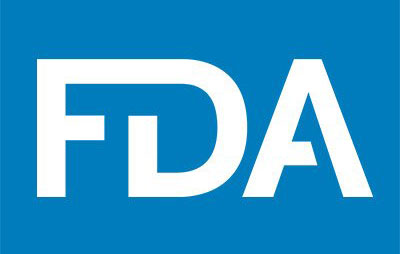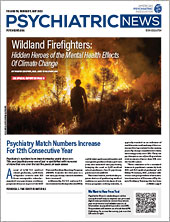The U.S. Food and Drug Administration (FDA) on March 29
approved Narcan (naloxone) 4 mg hydrochloride nasal spray for purchase without a prescription. Narcan rapidly reverses the effects of an opioid overdose.
The FDA’s action “paves the way” for Narcan to be sold in drugstores, supermarkets, convenience stores, gas stations, and online, according to an FDA news release. The medication will be available by late summer, and in the meantime it remains available by prescription.
The over-the-counter (OTC) approval was granted to Emergent BioSolutions, Narcan’s manufacturer. In February, two FDA advisory committees
recommended Narcan be made available without a prescription. According to a
news release from Emergent BioSolutions, the OTC product will have the same formulation, device design, and prescription strength as the original product.
“This is a game changer,” said Elie Aoun, M.D., APA’s early career psychiatrist trustee-at-large and an assistant professor of clinical psychiatry at Columbia University College of Physicians and Surgeons in the Division of Law, Ethics, and Psychiatry. “This is one of the biggest developments in the addiction and opioid epidemic in a long time. A lot of lives are going to be saved because of this.”
Making Narcan widely available is critical in fighting the rising rates of drug overdose deaths, Aoun said. Anyone who uses illicit opioids is at risk of an opioid overdose, as even cocaine, methamphetamine, and ketamine are increasingly being laced with fentanyl.
The FDA’s approval of Narcan as an OTC product “underscores the extensive efforts the agency has undertaken to combat the overdose crisis,” Patrizia Cavazzoni, M.D., director of the FDA’s Center for Drug Evaluation and Research, said in the FDA news release.
Cavazzoni added that the agency is working with its federal partners to ensure continued access to naloxone during Narcan’s transition to OTC status. “Further, we will work with any sponsor seeking to market a nonprescription naloxone product, including through an Rx to OTC switch, and encourage manufacturers to contact the agency as early as possible to initiate discussions,” Cavazzoni said.
Uncertainty remains about how accessible Narcan will be as an OTC medication, particularly regarding its price. “This will be a useless step if people can’t afford it,” Aoun said. Emergent BioSolutions has yet to reveal the price at which OTC Narcan will be sold.
APA expressed its support of Narcan for OTC use in a
letter to FDA Commissioner Robert M. Califf, M.D., in January, noting that naloxone nasal spray and autoinjector formulations are safe and effective. Further, APA encouraged the FDA to address supply chain issues; education related to opioid overdoses (such as through a package insert that describes the signs of an opioid overdose, outlines how to administer naloxone, and reminds the user to call emergency services); and cost.
“Cost barriers must be mitigated through payers’ coverage of OTC formulations of naloxone,” APA’s letter stated. “For example, Medicare does not pay for some forms of nicotine replacement therapy such as the patch, gum, or lozenges due to [these products] being OTC. APA encourages FDA to work with [the Centers for Medicare and Medicaid Services] and other payers to keep cost down for the most vulnerable populations.”
It would be a major setback if making Narcan OTC means insurers will stop paying for it, Aoun said. Right now, Narcan is available at little to no cost with insurance coverage.
Other efforts to increase naloxone’s availability have fallen short. Many states have standing prescriptions so anyone can go into the pharmacy to purchase the drug. But many people do not know about such availability. According to a recent
report by the Reagan-Udall Foundation for the FDA, 2.64 million doses of naloxone were distributed by retail pharmacies in 2021, compared with 6.61 million distributed by nonretail organizations such as first responders and community groups.
Further, several studies have found that the standing orders may not have their intended effect. Studies involving pharmacies in California, Georgia, New Jersey, Ohio, and Pennsylvania found that naloxone was in stock and available via the respective state’s standing order in less than half of the pharmacies surveyed, according to a 2021
review published in
Integrated Pharmacy Research and Practice.
If OTC Narcan is sold at a low price and it continues to be covered by insurers, its widespread availability will help to destigmatize substance use disorders generally, Aoun said. “A lot of people don’t want to tell their doctors that they’re using illicit drugs and won’t ask for Narcan,” he said. “Making it OTC means it will probably have a huge marketing and educational campaign, too. It will mean people can easily carry it around and stop overdoses when they see them occurring. It will prevent a lot of unnecessary deaths.” ■


